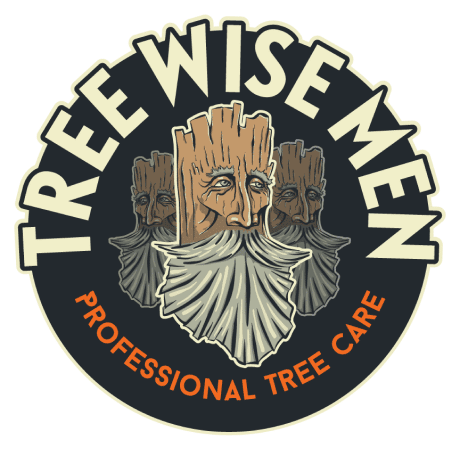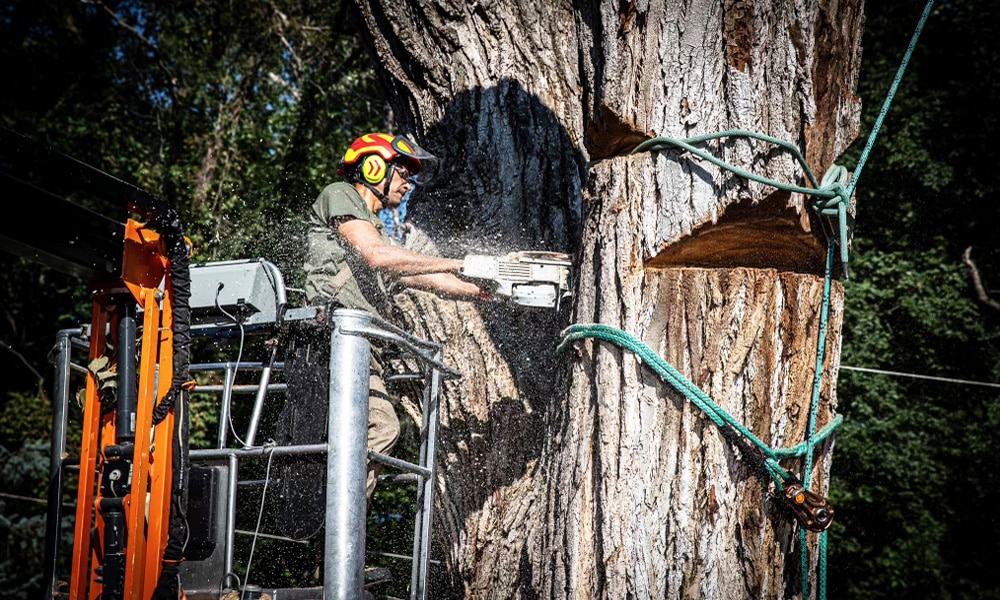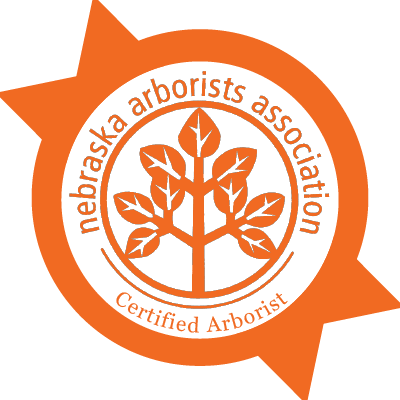Tree and Stump Removal in Council Bluffs, Iowa
No landscape is complete without these living air cleaners. But when weakened by storms, disease, and age, these beauties begin to pose risks. When unhealthy or damaged trees need attention, tree and stump removal in Council Bluffs Iowa may be able to help.
It may seem easy to sum up tree and stump removal at first glance. There are actually a few different ways to take down trees and get rid of stumps. Results vary as well.
- Small Stump Left after Tree Removal. Most of the tree is cut down. All that remains is a little bit of the tree’s stump.
Pros: This budget-friendly option works for trunks that have grown into chain-link fencing.
Cons: Stumps become eyesores. Destructive pests can find these tree remnants very inviting.
- Stump Ground after Tree Removal. The entire tree is taken down. A stump grinder is used to grind the remaining stump about a foot into the earth. Nearby surface roots are also ground.
Pros: The terrain is not completely disrupted. Less equipment and manpower are needed than for complete removal.
Cons: The stump’s still there. Complete decomposition takes years. Another tree can’t be planted in the same spot for a long time.
- Total Elimination. The tree is completely removed. The big guns are brought in instead of a stump grinder. An excavator or backhoe digs out the whole stump, roots, and all.
Pros: You get a clean slate on the same day. Gardening plans are given the green light.
Cons: This most invasive option is also the costliest.
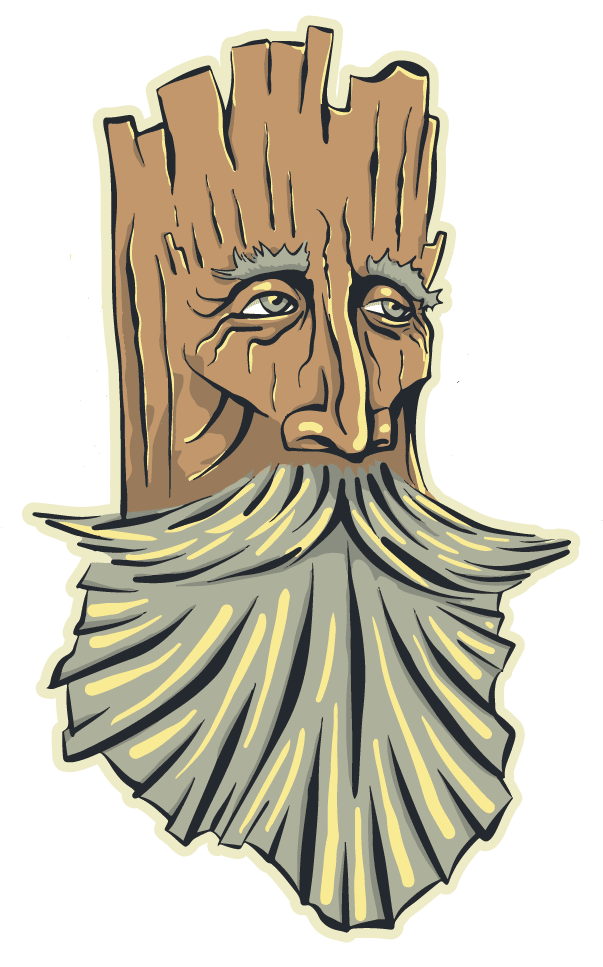
When It Comes To Your Trees, Make the Wise Decision & Give Tree Wise Men a Call!
When It Comes to Your Trees, Make the Wise Decision!
If a tree falls in a forest and there’s nobody around to hear, does it make a sound? It doesn’t matter unless you live in a forest. If a tree falls on your property, there could be many sounds – none of them good. Services from a professional tree and stump removal in Council Bluffs Iowa may be necessary because a tree is:
- A nuisance (sheds excessive sap, seedpods, berries, or cones)
- Dead
- In the way of views, construction or future landscaping projects
- Infested or diseased to the breaking point
- Leaning
- Sickly
- Suffering from severe storm damage
- Too close to a structure, sewage system, and/or utility lines
- Unsafe (has advanced decay, dangerous cracks, bad crotch formation, etc.)
Spot a red flag in your green space? The Tree Wise team can handle your tree and stump removal in Council Bluffs, IA. Our certified arborists are licensed and insured. We’ll tell you what we would do if it were our yard. Then we can make it happen.
The Process of Tree and Stump Removal in Council Bluffs Iowa
There are some hard and fast rules for trimming and pruning trees to keep them as healthy as possible. It is important to remove dead, damaged, or broken branches from the tree as soon as you notice it. It is also very important to use sharp and clean tools when making cuts on the tree trunk or branches. To properly trim or prune a tree, be sure to make any cuts slightly above the buds of the branches.
The cuts should be clean and straight without compromising or ripping the bark, which could cause damage to the tree. It is also very important to do the trimming and pruning at the proper time of the year to ensure the best outcome for the tree.
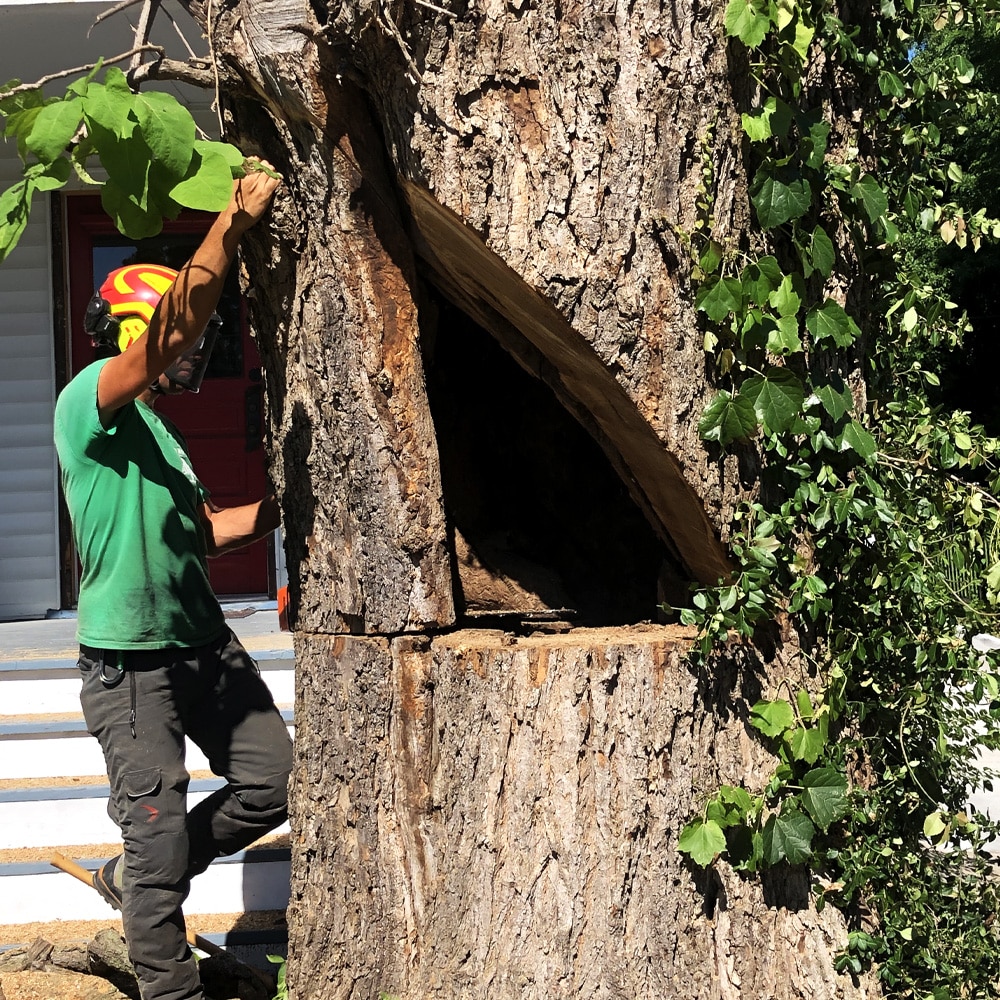
Trees don’t play. Even taking down smaller varieties isn’t for the average homeowner. Forget cutting down the big guys. Using YouTube as a DIY guide can land you in the morgue. When a tree needs to go, you’ll need a pro.
Removal steps vary based on size and location. Removing a 20-foot serviceberry on a deserted lot is no sweat. Taking down a 60-foot oak is a different story. If there’s enough room, some trees may be felled in a single piece.
Larger varieties or those hemmed in need extra attention. Climbers may scale the tree. Ropes secure sections. A bucket truck can also be used if space allows.
Starting at the top, specialized cuts are made. Large pieces can drop or be lowered with ropes. The trunk is next on the chopping block. Sections are loaded into the chipper. Removing the stump is the last part of the process.
If the space is super tight, a crane may be needed. A tall crane is lowered into crowded areas. Branches are cut one by one, then moved to the drop zone. Crew members can deal with pieces out of the way.
There are many tools and pieces of equipment that may be used in tree and stump removal:
- Ax
- Backhoe
- Bucket truck with a cherry picker basket
- Carabiners, pulleys and slings
- Chainsaw chaps
- Chainsaw helmet
- Chainsaw(s)
- Climbing spikes or spurs
- Crane
- Excavator
- Flatbed truck
- Grapple saw
- Hard hat
- Harnesses
- Ladder
- Loppers
- Pole saw
- Protection for ears and eyes
- Rope (you can never have enough)
- Saddle(s)
- Speedline
- Straps
- Stump grinder
- Wedges
- Wood chipper
- Work gloves
Every year, tens of thousands of injuries happen to would-be tree trimmers. True professionals make safety a top priority.
Some standards put in place at job sites can include:
- Assessing the tree beforehand to figure out the best removal strategy
- Checking all team members’ locations before making drops
- Creating a large enough drop zone with clear boundaries
- Ensuring equipment is working properly and blades are sharpened
- Having an emergency plan
- Maintaining a strict no-contact policy for electric conductors
- Never getting closer than 10 feet from utility lines
- Removing people, pets, and possible threats from the surrounding area
- Using fall-protection gear when climbing
- Wearing proper safety equipment
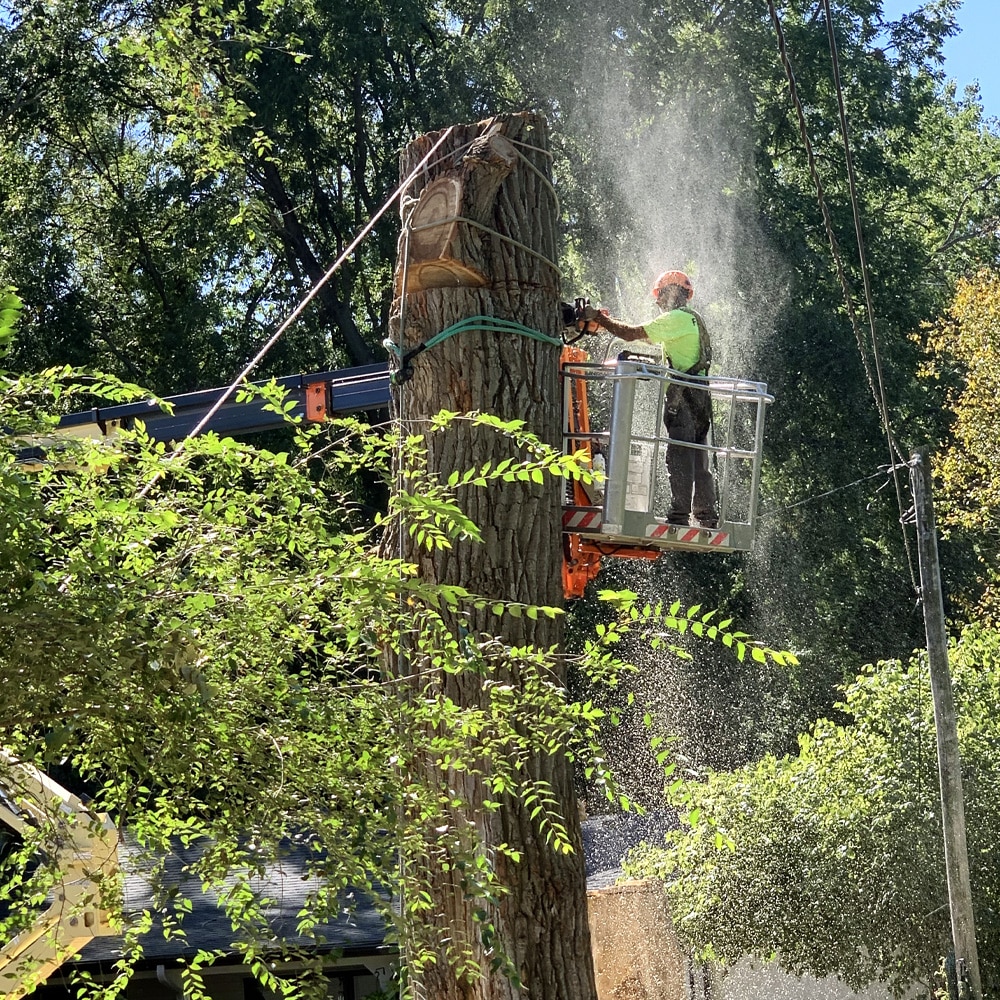
Pro tip: One of the most important safety policies happens regularly- mandatory drug testing. Tree removal without a zero-tolerance policy can be deadly.
Tips for Maintaining a Healthy Landscape in Council Bluffs, IA
Caring for trees can preserve their lifespan. Do things correctly from the start. Correct planting methods promote hardiness. Following these steps can help:
- Choose the Right Tree. Cherry trees are lovely, but their invasive roots can lead to problems. Do your research. See what types are best suited to your yard over time. Consider a native species.
- Select the Ideal Spot. The seedling may look tiny now, but it will need room to grow. Pick a spot where roots won’t get entangled with underground pipes or overhead lines. Don’t plant too close to structures.
- Call Before Digging. Even a spade can cause damage. Call 811 in Council Bluffs, IA. Markers will indicate where public utility lines are. Private lines are your responsibility.
- Plan Ahead. Autumn is the best season for planting. Early spring ranks a distant second.
- Dig. Dig a hole roughly three times the width of the rootball.
- Loosen the Roots. Break roots up if the sapling is rootbound. Brush the dirt away to find any patterns. Gently pull roots away so they’re no longer constricted.
- Add Soil. The base of the trunk should sit a hair taller than ground level. Shovel dirt all around the rootball. Do NOT add dirt on top of the rootball as this can smother the tree.
- Water. Spray the newly planted area with water for a good five minutes. Wait several minutes. Then give the area a light watering.
- Mulch. Add mulch to help retain moisture. Leave the area around the base of the trunk free of debris. Move out a few inches. Mulch circles three feet in diameter should be fine for many young trees.
Once planting is complete, you’re not out of the woods. Baby trees need TLC and plenty of water until established. Regular watering through a drip irrigation system works well. The main goal is watering where you can’t see. Deep, underground watering takes consistent effort.
Protecting trees can be as simple as keeping them in good shape. Unhealthy trees are easy targets. Being well-hydrated, routinely trimmed, and pruned properly can make all the difference.
When to Remove a Tree and Stump in Council Bluffs, IA
Sometimes a tree is noticeably leaning. Not all damage is so easy to see. Signs a tree may need to be removed could be:
- A trunk that is hollow, badly cracked or now a wildlife buffet
- Branches falling for no apparent reason
- Construction that has left a tree with drastic changes in light, grade or soil
- Growing towards utility lines
- Large, dead branches seen in the crown
- Leaves stop growing- anywhere
- Noticeable dead limbs on only one side
- Overcrowding
- Roots seem to be raised
- Sprouts and/or fungi cropping up from trunk base
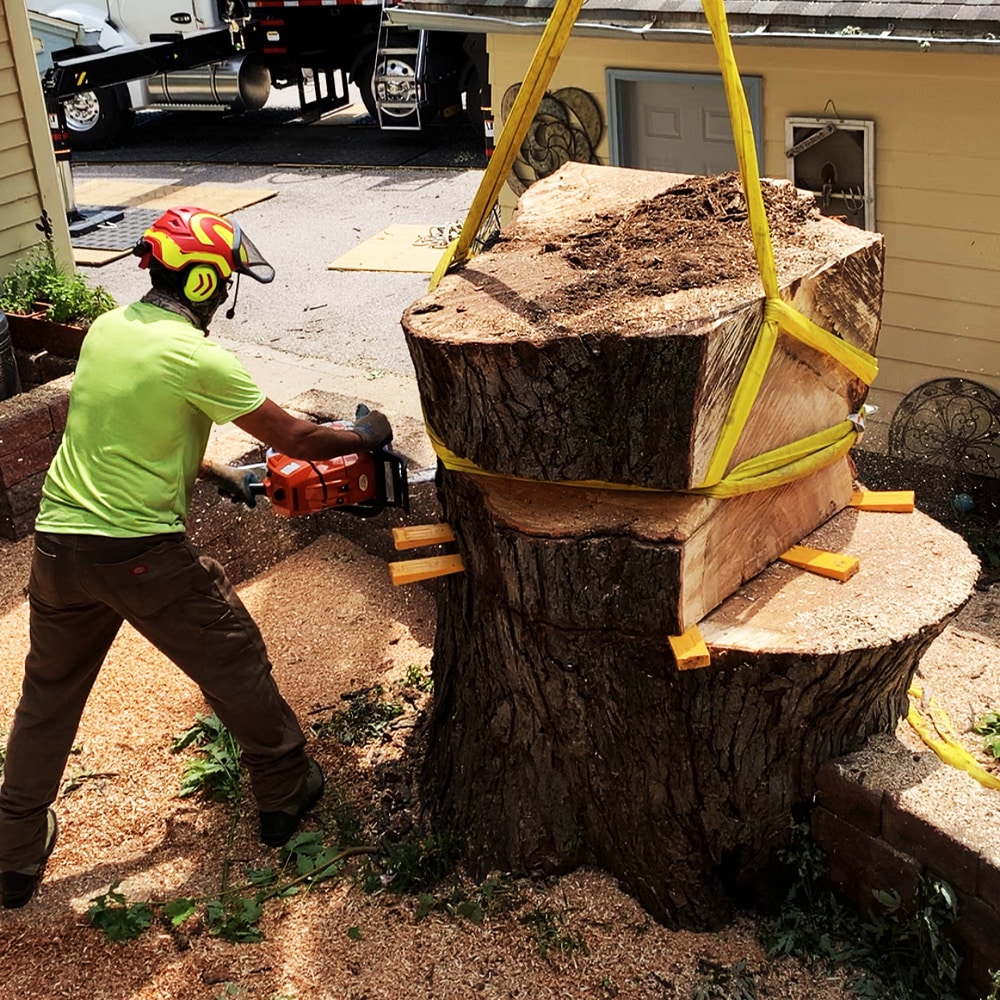
Not every tree has a definite expiration date. When not an immediate threat, you can take time to consider your options. Is the tree historically or sentimentally important? Imagine the area after removal. How much will everything cost? What could happen if you don’t get this tree removed?
The best time to remove a tree is when it’s needed. The next best time is during winter or early spring. Deciduous varieties are bare in these seasons. Removal is easier when branches aren’t weighed down with leaves.
How to Choose a Tree and Stump Removal Service in Council Bluffs, IA
Ready to move forward? Take the next step by finding a reputable tree service. Before giving the go-ahead, ask some serious questions.
- Are you a licensed arborist with Council Bluffs, IA?
- Can you refer me to some past clients so I can speak with them and see examples of your work?
- Do you have arborists on staff certified from either Nebraska Arborists Association (NAA) or the International Society of Arboriculture (ISA)?
- How is cleanup handled after jobs are done?
- How long have you been doing tree work?
- When can I expect a written bid and how long will it be good for?
- When’s the last time you removed a tree like mine?
- Which professional memberships do you maintain?
- Would you mind providing me with proof of insurance (both general liability and workers’ comp)?
Don’t settle for eyeballing. Snap a quick picture (front and back) of the insurance certificate. Call to confirm the coverage is current. Unfortunately, the burden falls on you to double-check.
It’s critical that any work crew on your property be properly insured. Otherwise, you may be held liable for any accidents that happen. If tree removal goes wrong, you need to be covered.
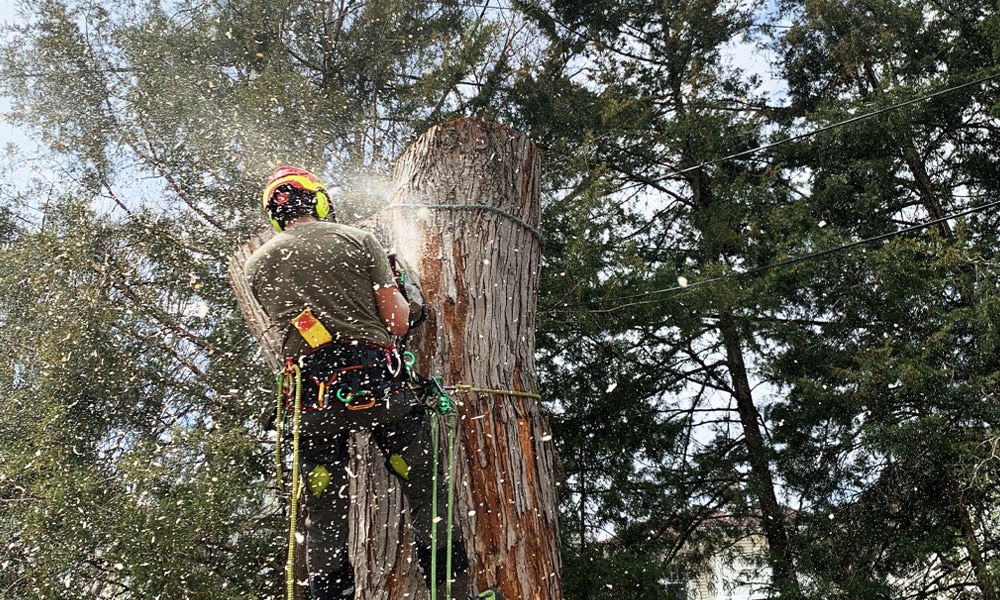
You can’t expect a model to be cover ready without a team of stylists. Nor can you ignore trees while hoping their beauty doesn’t fade and their health doesn’t fail. Keep your property safe by consistently maintaining nearby trees.
While upkeep helps these natural wonders be healthy, no tree lives forever. If something looks off to you, contact a professional arborist. Tree and stump removal may not be the most glamorous part of landscaping, but it could save your family, home, and even your life.
Right before a storm is not the time to try and schedule tree and stump removal in Lincoln, NE. Staying on top of this work throughout the year keeps the pressure off. Powerful wind gusts can blow right through pruned limbs. It’s the overlooked, overgrown trees that face substantial damage.
Wondering if a tree and stump may need to be removed? Contact Tree Wise experts for tree and stump removal in Council Bluffs Iowa. We’ll see if your tree can be saved. One of our certified arborists can give recommendations. We make the world more beautiful one tree at a time.
